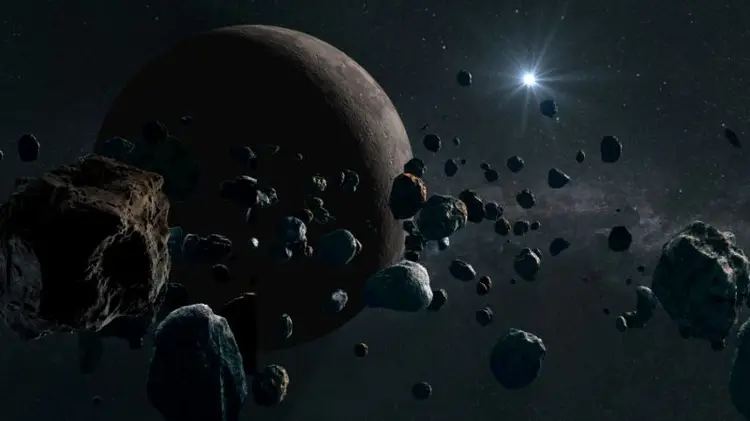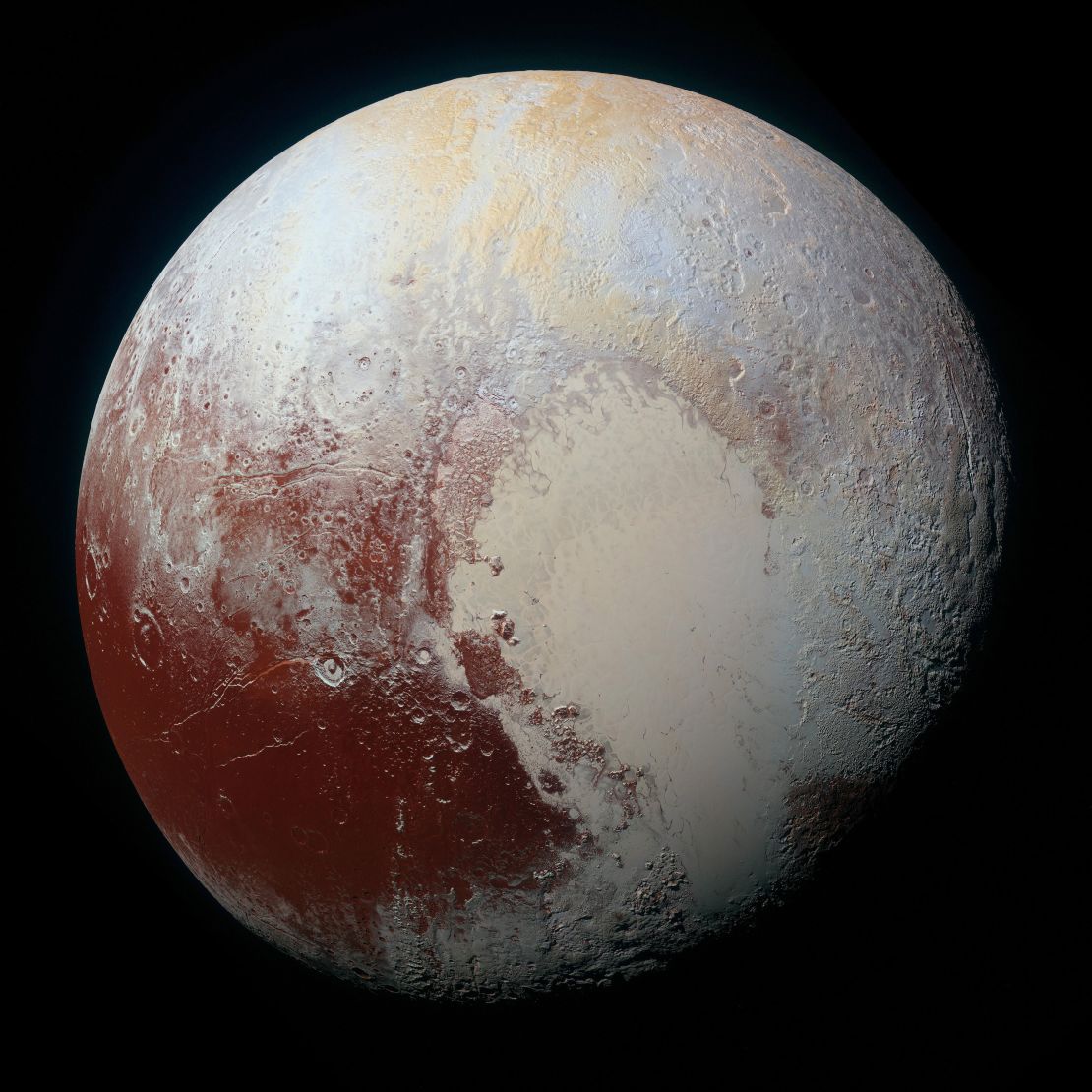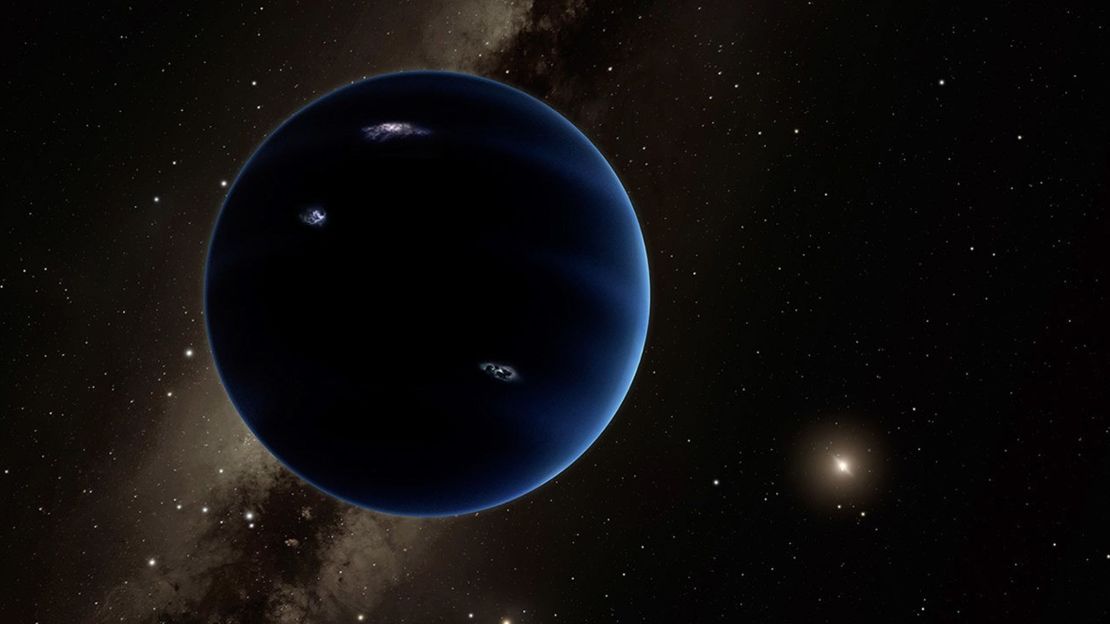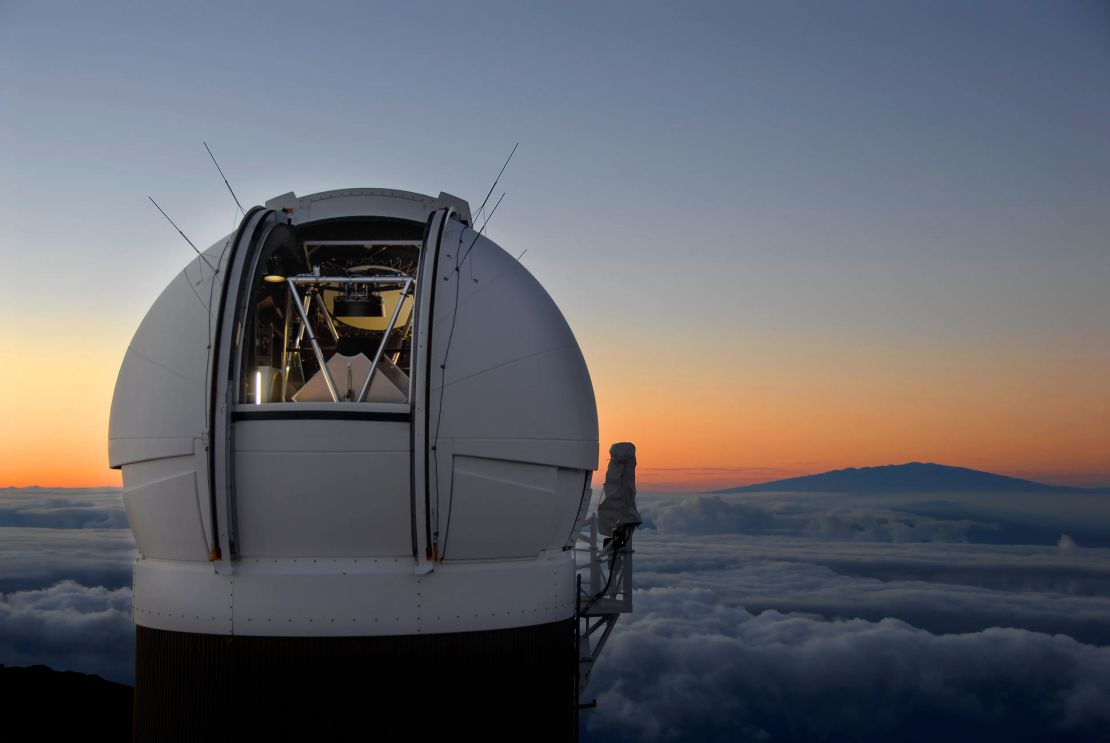Is there a hidden planet in our solar system? Astronomers say the moment of truth is near | CNN

Subscribe to CNN's Wonder Theory science newsletter. Dive into the universe with updates on amazing discoveries, scientific progress, and much more.

Once upon a time, our solar system included nine planets. Astronomer Mike Brown, often referred to as "the man who demoted Pluto," revealed that for years following his well-known discovery, he received angry letters from children and even inappropriate late-night phone calls.
Brown, who teaches planetary astronomy at Caltech, found a small celestial body named Eris in the Kuiper Belt. This region is a large area filled with icy bodies located beyond Neptune’s orbit, and it also includes the area where the former ninth planet was located. His discovery in 2005 triggered a series of events that ultimately resulted in Pluto being controversially reclassified away from its planet status the following year.
However, just as the Kuiper Belt seemingly led to the loss of a ninth planet, Brown and fellow researchers believe it might actually return one.
Astronomers think that the belt, believed to be composed of remnants from the early days of our solar system, stretches out 50 times farther from the sun than Earth is. There’s also an additional region that extends nearly 20 times that distance beyond the belt. Pluto, which is now considered a dwarf planet alongside Eris, is one of the largest icy objects found in this area. However, it does not clear its orbit of other debris, which is a key requirement. This is why, according to the criteria established by the International Astronomical Union, Pluto isn’t classified in the same category as the eight major planets.
Due to the significant distance of the Kuiper Belt from the sun, spotting objects in this region can be quite challenging. For over ten years, astronomers have been on the lookout for an elusive planet that has yet to be seen directly, although its existence is suggested by the movements of nearby celestial bodies. This mysterious body is frequently referred to as Planet X or Planet Nine.
Malena Rice, an assistant professor of astronomy at Yale University, stated, “Discovering another planet would be incredibly significant. It could change our perspective on our solar system and others, and help us understand our place within it. This is truly thrilling — there’s so much we could learn about the universe.”
The thrill is accompanied by some debate — various groups hold conflicting views about the planet, while some scientists even argue that it may not exist at all.
"Planet Nine is definitely a subject that sparks strong opinions," Rice noted. "There are people who firmly believe it exists, while others are just as convinced it doesn’t. There’s a lot of discussion trying to define what it actually is and whether it’s out there at all. This kind of disagreement is what makes the topic so intriguing, as it shows how passionately people feel about it."
Before long, the discussion may reach a conclusion when a new telescope that can scan the whole sky every few nights becomes operational in late 2025. In the meantime, a group of researchers thinks they have discovered the strongest proof to date that the elusive planet actually exists.
The hunt for Planet Nine has only just started to gain momentum, but the debate over whether it actually exists has been ongoing for over 175 years.
"After Neptune was discovered in 1846, more than 30 astronomers have suggested that different kinds of planets exist beyond Neptune, but they have consistently been mistaken," stated Konstantin Batygin, a fellow academic of Brown's and a professor of planetary science at Caltech. By astronomical standards, any object that orbits the sun outside of Neptune's path is classified as "trans-Neptunian."

"I never imagined I would be discussing the possibility of a planet beyond Neptune, but I genuinely think that, in contrast to past claims, we might actually be onto something this time," he remarked.
Batygin and Brown are leading advocates for the existence of Planet Nine. Since 2014, they have been dedicated to searching for this elusive planet, motivated by a research study conducted by astronomers Scott Sheppard from the Carnegie Institution for Science in Washington, DC, and Chadwick Trujillo, an associate professor at Northern Arizona University.
Sheppard and Trujillo were the first to observe that the orbits of several known trans-Neptunian objects were oddly grouped together. They proposed that there might be an undiscovered planet, significantly larger than Earth and located more than 200 times the distance between our planet and the sun, that could be influencing the paths of these smaller celestial bodies.
“The most eye-catching proof still comes from the earliest observations: the farthest objects beyond Neptune all have orbits that align in the same direction,” Brown noted in an email.
Batygin has collaborated on numerous studies regarding Planet Nine, presenting various pieces of evidence for its existence. He noted that the most compelling evidence can be found in his most recent research, which he co-wrote with Brown and two other scientists, published in April in The Astrophysical Journal Letters.
The research focuses on frozen objects that are being influenced by forces that send them into Neptune's orbit before they eventually exit the solar system. “When you observe these objects, their lifespans are very short compared to the solar system's age,” explained Batygin. “This indicates that there’s some factor driving them into that position. So what could it be?”
One possibility might involve a phenomenon known as galactic tide, which is the result of gravitational influences from far-off stars within the Milky Way galaxy. However, Batygin and his team conducted computer simulations to compare this idea with the existence of Planet Nine. Their findings indicated that a solar system lacking this elusive planet is "heavily contradicted by the data."
"That's an incredible piece of evidence. Looking back, it's clear now, and I can’t help but feel a bit ashamed that it took us nearly ten years to come to this conclusion. But I guess it's better late than never," Batygin remarked.
Batygin describes Planet Nine as a "super-Earth," which means it has a mass roughly five to seven times greater than Earth. Its orbit takes between 10,000 and 20,000 years to complete. "What I can't determine through simulations is its exact position in its orbit and what it's made of," Batygin explained. "The simplest theory is that it resembles a smaller version of Uranus and Neptune, likely one of the cores that formed during the creation of those planets."
The super-Earth theory is likely the most favored explanation among those who believe in Planet Nine, but there are other theories that offer different interpretations.
A research article released in August 2023 suggests the potential presence of a concealed planet that is significantly smaller, boasting a mass that is 1.5 to 3 times greater than that of Earth. According to Patryk Sofia Lykawka, an associate professor of planetary sciences at Kindai University in Japan and a coauthor of the research, "This could be an icy, rocky version of Earth or something akin to a super-sized Pluto."

According to Lykawka, due to its substantial mass, this celestial body would possess significant internal energy, which could, for instance, support oceans beneath its surface. Its orbit would be extremely far away, situated well beyond Neptune, and would have a much steeper tilt compared to the recognized planets—steeper even than Pluto’s, which has an inclination of around 17 degrees. In astronomy, a planet's orbit is described as being inclined when it doesn’t align with Earth's orbital plane.
The idea of the planet comes from computer simulations designed to clarify the unusual patterns seen in groups of trans-Neptunian objects. This indicates some parallels with Batygin’s studies. Nonetheless, Lykawka noted that his model examines different orbital patterns and diverges significantly from Batygin’s approach. For this reason, he prefers to call his hypothetical object a “Kuiper Belt planet” rather than Planet Nine, to emphasize that he is discussing distinct theoretical planets.
Some alternative theories suggest that the strange phenomena people are trying to explain might actually be caused by something completely different, like a primordial black hole that was formed shortly after the big bang and ended up being captured by our solar system as it journeyed through the galaxy. Another possibility is that there could be flaws in our existing scientific understanding of gravity.
However, Rice from Yale University points out that testing these theories would be quite challenging. “There are many other concepts out there, but I tend to lean towards Occam's razor when determining what to focus on for investigation,” she explained. This principle suggests that when faced with multiple explanations, the simplest one is often the most accurate. "Considering scientific feasibility, we already recognize eight planets, so having an additional planet in the same system isn’t that far-fetched."
She mentioned that a key step moving ahead is to discover more trans-Neptunian objects, which are the basis of Batygin's theory. It’s important to show that the clustering of their orbits is statistically meaningful.
Certain researchers think that scientists have discovered too few of these far-off trans-Neptunian objects to make any definitive claims regarding their orbits.
"We have around a dozen or so of these objects," explained Renu Malhotra, a regents professor of planetary sciences at the University of Arizona. "However, we only track the brightest ones and just a small portion of those, since we observe them when they're nearest to the sun."
Malhotra points out that the data is influenced by observational bias, which makes some researchers doubtful about its reliability. One of these skeptics is Sheppard from the Carnegie Institution for Science, who was also a coauthor of the 2014 study that motivated Batygin's work.
Sheppard mentioned in an email, "At this stage, we anticipated discovering a larger number of these unusual objects beyond Neptune. If we had several dozen of them, we could confidently assess whether they are genuinely grouped together in space. Unfortunately, we're still dealing with a limited number of observations, as they appear to be much less common than we initially believed. Currently, I would say there might be a super-Earth planet in the far reaches of our solar system, but we cannot make that assertion with much certainty."

Malhotra notes that the debate can become quite intense. "Just like anyone else, scientists have varied personality types. Some take a more confrontational approach to their research, while others are more cautious," she explained. "There seems to be a belief that the concept of a Neptune-sized Planet Nine is being promoted more forcefully than the data actually supports."
In August 2017, Malhotra worked with others on a paper that proposed the existence of a planet about the size of Mars in the Kuiper Belt. However, she is still keeping an open mind about the possibility of Planet Nine.
"It's still uncertain. We're right on the cusp of being statistically significant," she explained. "However, our current understanding of physics and our observations don't exclude the chance of discovering massive planets located far beyond Neptune's distance from the sun, potentially at tens of times that distance."
Looking at the planet firsthand would definitely settle any debate, but every effort made so far has yielded no results.
Batygin worked with others on a study in March that utilized information from the Pan-STARRS observatory in Hawaii. This enabled the researchers to examine 78% of the sky where Planet Nine is believed to exist, yet they were unable to locate it.
"It’s been quite a challenge," he mentioned regarding the effort, pointing out the struggles of operating telescopes within a limited timeframe while dealing with equipment malfunctions and unfavorable weather conditions.
According to Batygin, trying to find such a far-off object without guidance is extremely challenging. It's like trying to hit a target with a sniper rifle rather than using binoculars to get a clear view.
"The sky feels incredibly vast when you're trying to find something that’s so faint," he explained. "This object is about 100 million times dimmer than Neptune, which is really testing the limits of what the biggest telescopes in the world can currently do."
Other investigations, like the one conducted in December 2021 with the Atacama Cosmology Telescope in Chile, have yielded similar results. "I analyzed tens of thousands of different orbits, but ultimately, I didn't find anything," stated Sigurd Naess, the lead researcher from the Institute of Theoretical Astrophysics at the University of Oslo in Norway.
He mentioned that the device was sensitive enough to potentially spot a planet located anywhere from 300 to 600 times the distance from the Earth to the sun.
"While that's quite informative, it's still not sufficient to completely rule out the existence of Planet Nine," Naess mentioned in an email.
Despite the varying viewpoints and debates, all researchers share a consensus. A new wide-angle telescope that is currently being built has the potential to settle the discussions once the team from the US National Science Foundation and Stanford University begins its scientific work in late 2025. Named the Vera C. Rubin Observatory, it features the largest digital camera ever constructed and is located on an 8,800-foot mountain in northern Chile.
"This advanced telescope will scan the entire sky multiple times a week," Batygin explained. "There's a chance it could spot Planet Nine directly, which would be an incredible outcome and mark a significant turning point in our quest. At the very least, it'll uncover many more objects in the Kuiper Belt. Even if it doesn't identify a single new object, the results will still support the Planet Nine theory by examining all the statistics and patterns we've observed through a separate survey."
Rice believes that the telescope will play a significant role in resolving the ongoing debate and will clearly clarify the importance of the alignment of trans-Neptunian objects, which is a crucial piece of evidence for the existence of Planet Nine.
According to Rice, discovering a super-Earth with the Rubin telescope would be thrilling. Super-Earths, which are exoplanets larger than Earth but smaller than Neptune, are a widely found category of such planets.
"We don't have a single one in our solar system, which is quite puzzling and has remained a significant mystery. We discover numerous exoplanets in other star systems, and it would be amazing to examine one up close. The challenge with exoplanets is that they are so distant, making it hard to understand their actual physical characteristics," Rice explained.
Discovering a smaller planet would generate a lot of enthusiasm, Rice pointed out, as each planet in our solar system provides valuable insights that help scientists understand the thousands of similar exoplanets being discovered throughout the galaxy.
What if we don't discover anything at all? Even in that case, it's important to have a clear understanding of how many planets exist, according to Rice. "I find it quite humbling that we don’t actually know the exact number of planets in our own solar system."
This implies that even the information many individuals absorbed from their childhood textbooks can evolve as researchers uncover new details about the universe.
"That's truly an incredible aspect," she continued. "Human understanding is always evolving—sometimes there are significant changes, while other times it's more of a back-and-forth discussion. It's a great example of what the scientific method is all about."









































